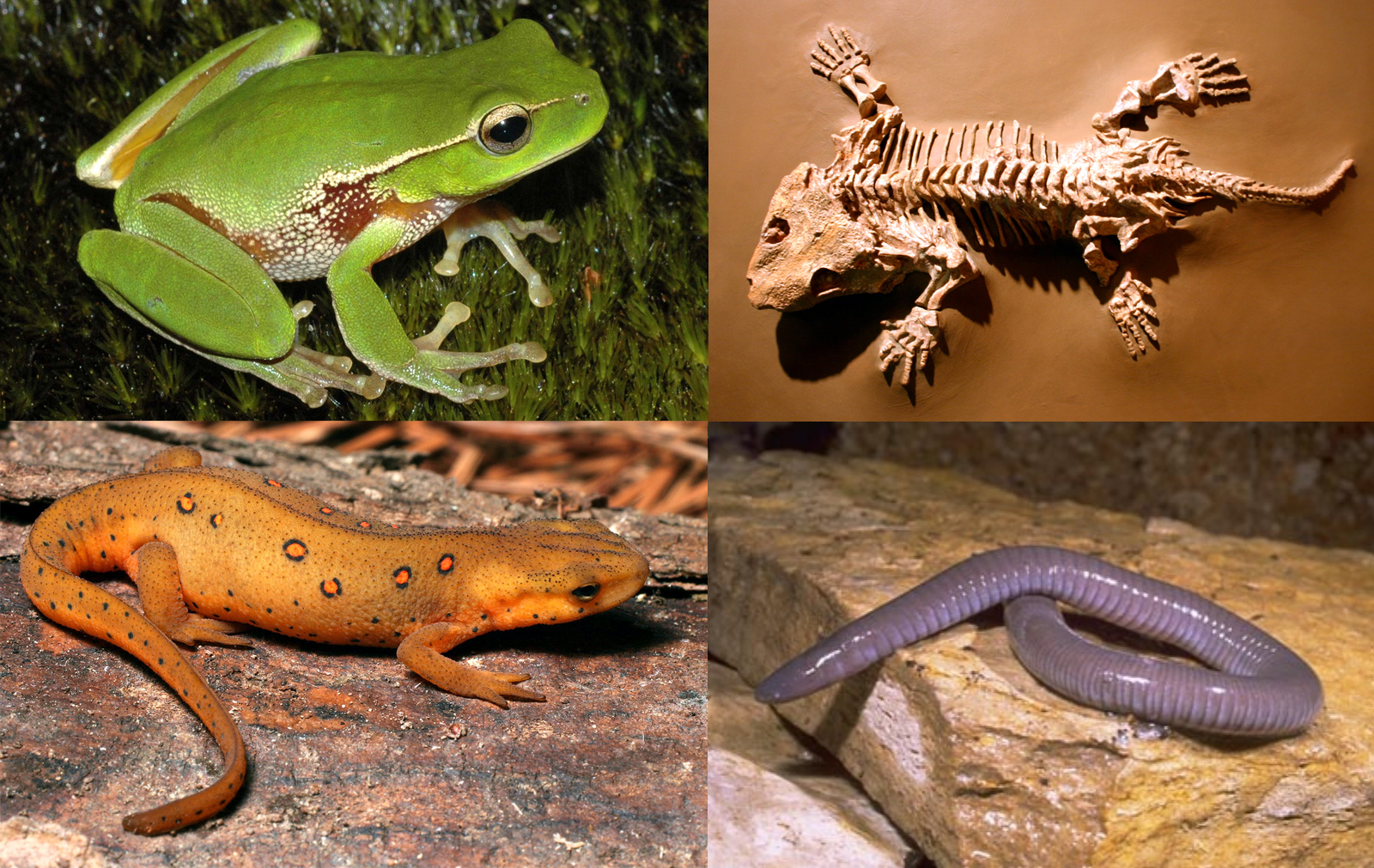Amphibians, or amphibians, are a class of vertebrate tetrapods, including newts, salamanders, frogs, and worms, a total of about 8,384 modern species, and this class is relatively small. .. In Russia-28 Wikipedia Amphibians are a class of amphibian febrile quadrupeds. All living amphibians belong to the group Lissamphibia. They live in a wide variety of habitats, most of which live in terrestrial, fossil, arboreal or freshwater aquatic ecosystems. Amphibians are a group of tetrapod vertebrates, including modern frogs and toads, Caecilians, newts and salamanders. Are frogs and salamanders vertebrates? Frogs, salamanders, and Caesillian amphibians are vertebrates and therefore have a bone skeleton. Most amphibians live partly underwater and partly on land. Amphibians are salamanders, newts, caecilians (limbless insect-like amphibians), and of course toads and frogs. All amphibians are vertebrates because they have a spine. 27 (UPI)-So far, scientists knew only four biofluorescent amphibians, one salamander and three frog species. Bioluminescence seems to be fairly common among amphibians, according to a new study published this week in the journal Scientific Reports.
What is the scientific classification of amphibians?
Scientific classification. Amphibians are cold-blooded animals that belong to the amphibian class, which consists of three orders. Amphibians are the most important class in the vertebrate group. Amphibians can be divided into three major orders because they are the first tetrapods (four-legged vertebrates).
Are amphibians vertebrates or invertebrates?
Amphibians are the most important class in the vertebrate group. Amphibians can be divided into three major sequences because they are the first tetrapods (four-legged vertebrates). Amphibians are cold-blooded animals that belong to the amphibian class, which consists of three orders.
What are the five interesting facts about amphibians?
Amphibian Facts Amphibians mean two lives. They live on water and land. Amphibians are cold-blooded, febrile animals. They also fall into the class of vertebrates (that is, they have a spine or spine). Amphibians breathe through the skin and undergo metamorphosis. Amphibians begin their lives in the water with their gills and tail.
What are some examples of bioluminescent amphibians?
Many amphibians such as this Ceratophry scranwelli exhibit bioluminescence. Amphibians are amphibian-class febrile quadrupeds. All living amphibians belong to the group Lissamphibia. They live in a wide variety of habitats, most of which live in terrestrial, fossil, arboreal or freshwater aquatic ecosystems.
What do amphibian names mean?
The word amphibian is derived from the Greek word amphibian and means "to live a double life." The roots of the amphibian noun are in amphi, which means "both kinds," and bios, which means "life." The term is used for animal classes that spend part of their lives underwater and part on land.
Is Amphibia the Seed?
Amphibians. Amphibian classes are a diverse group of vertebrates that occupy different habitats and geographic areas. Currently, more than 7600 species are listed, almost 90% of which are salientia (frogs and toads).
What is the classification of amphibians?
All living amphibians belong to the Lissamphibia group. .. Amphibians. Amphibian Time Range: Late Debonian – Present, Clade: Batracomorpha Class: Amphibian Gray 1825 Subclass † Repospondiri † Temnospondiriri Sampivia (modern amphibian) Anula (frog) Kaudata (Salamander) Gymnofiona (Caesirian) † Albaner

Below you will find two helpful answers on a similar topic. 👇
What is fry and fingerlings?What are the stages of fish development?
